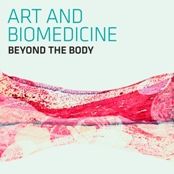The thing that hath been, it is that which shall be; and that which is done is that which shall be done: and there is no new thing under the sun. Is there any thing whereof it may be said, See, this is new? It hath been already of old time, which was before us (Ecclesiastes 1: 9-10; from the King James Bible)
David Edgerton’s The Shock of the Old: Technology and Global History Since 1900 is in many ways a splendid book. It has a clear and well-argued thesis, it reflects the author’s long research experience and command of the history of technology literature, and it is well-written and eminently readable for a non-specialist audience. In addition, much of its argument is as relevant for (medical) museum curators as it is for bookish historians of (medical) technology.
Consequently reviewers have been quite enthusiastic, for example Steve Shapin in The New Yorker (14 May) and Steven Yearley in the TLS (25 May; no link because the TLS is the stingiest culture magazine on earth, they never put a single fragment of content online for public use).
The idea is quite simple, and not entirely new (indeed Edgerton acknowledges that Svante Lindqvist, for one, has expressed similar ideas before, but only does so in a footnote). Criticising a traditional innovaton/invention-oriented history of technology, he shifts the perspective from novelties to the long durée of technological applications and use; this is part of a more general historiographical shift:
from the new to the old, the big to the small, the spectacular to the mundane, the masculine to the feminine, the rich to the poor” (p. xiv).
What’s historically significant then, in Edgerton’s view, is not how one damned new gimmick substitutes another over and over again, but how old technologies linger on and continue to play a significant social and cultural role long after they were innovations, not least in the less developed parts of the world. That’s ‘the shock of the old’.
It’s a sympathetic (but also very politically correct) approach, which can be read as a much needed antidote to a traditional innovation-oriented historiography. It is full of good and surprising examples, although it sometimes reads like a dead horse flogging exercise; after all, many social historians of technology over the years have said much that Edgerton would have difficulties to quarrel with. (Museum curators, on the other hand probably can learn more from reading it).
My major objection, however, is that Edgerton seems to undervalue the importance of a invention/innovation-driven historiography as a source of inspiration. In this he is not alone, of course. The anti-whig tradition in history of science, technology and medicine has generally been blind to the possibility that the critique of a history of innovation (and discovery and progress) may be a very innovative step for historians — but not necessarily useful for scientists, engineers and medical doctors.
If this is so, it opens up for an interesting metahistoriographical problem: If one applies Edgerton’s innovation- vs. use-oriented historiographical approach to historical scholarship itself, one will soon realise that almost all historians view their own practice in terms of historiographical innovation/innovation, but usually dismiss a user-perspective on historiography.
However, from a user-perspective (from the point of view of those who read history, for example scientists and engineeers) it would perhaps be as, and even more, relevant/useful to write a traditional innovation-oriented history? And maybe it is more useful because it stimulates the scientific/engineering imagination? While a user-oriented historiography easily becomes unimaginative, boring — and mundane.
But this book is neither unimaginative, boring or mundane. It’s a very masculine, rich and spectacular book. As the publisher’s jacket blurb points out: “The Shock of the Old radically revises our understanding … [it] is a radical new way of thinking about history and technology”. So much for the possibility of a shock of the old historiography! The anonymous authors of the Ecclesiastes must be disappointed with David Edgerton!
(If you read Swedish, see also the short discusison about Edgerton’s book between Gustav Holmberg and myself on http://www.gustavholmberg.com/tomrum/2007/08/01/gammal-teknik-2)



